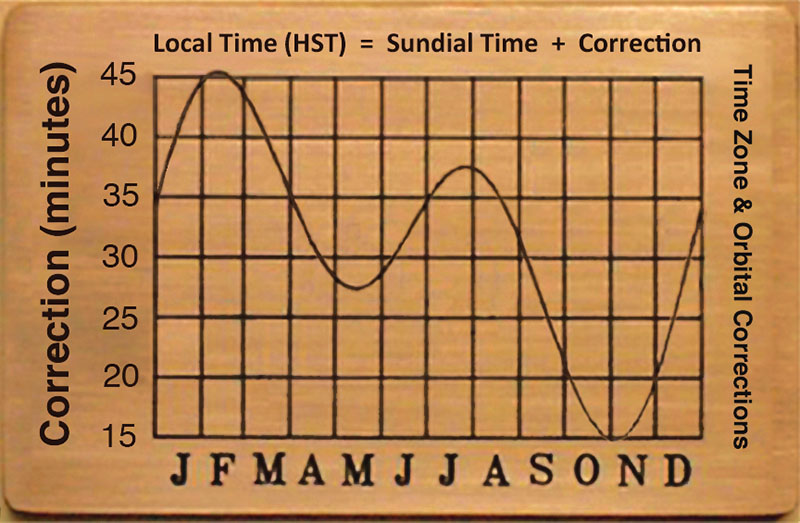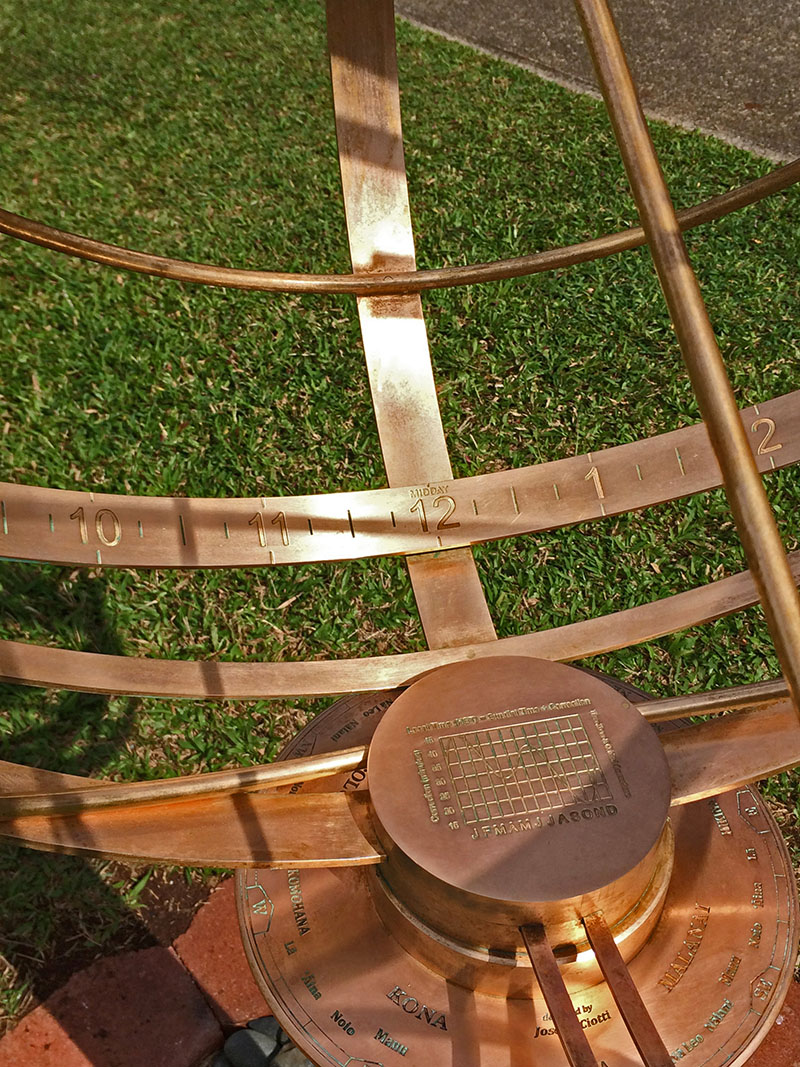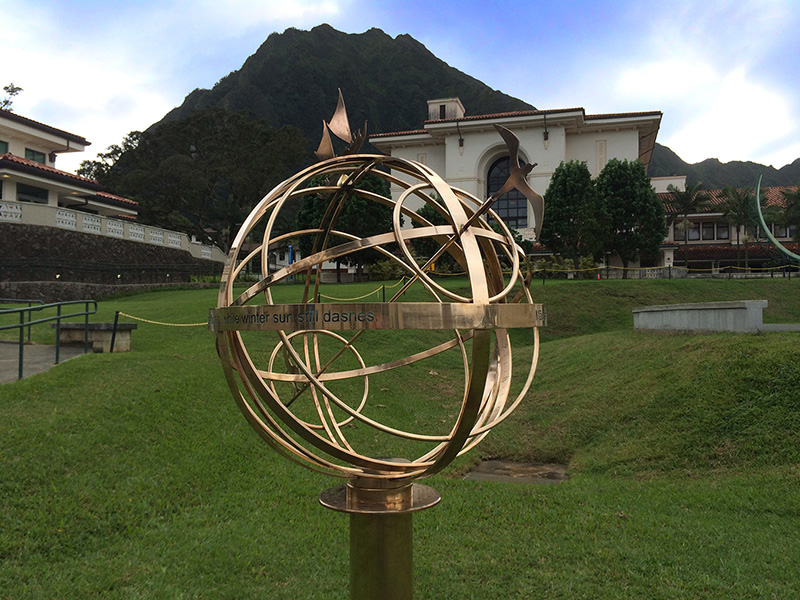Equation of Time

The Equation of Time (EOT) is an algorithm which changes Apparent Solar Time (Sundial time — that is, what's displayed by the sundial) to Local Time (what's displayed on a clock). In other words, the Equation of Time is the difference between our standard clock time and the time that would be based on the exact position of the sun in the sky as measured on a sundial. The correction (which is added to the Sundial Time to get the Local Time) adjust for the fact that:
- The sundial is not in the middle of its 15o-wide time zone
- The earth travels along an elliptical orbit — speeding up when it nears the sun (around January) and slows down when it's farthest from the sun (around July)
- Since the Earth's axis is tilted to its orbit, the sun's apparent motion along this inclined ecliptic has a varying effect when viewed along the equatorial plane that clocks are reckoned by
According to the EOT for Kāne‘ohe, Local (watch) Time runs between 15 and 45 minutes ahead of Apparent Solar (sundial) time —depending upon the day of the year. This is the correction that must be added to the time displayed on the sundial in order to synchronize it to HST — the local time in Hawai‘i. Officially, the time zone for Hawai‘i is GMT = -10, which means that Hawai‘i is 10 hours behind GMT (that is, HST = GMT -10). Note that Hawai‘i does not observe Daylight Saving Time.
The Hawai‘i Time Zone is centered at longitude W 150o — which extends from W 142o 30' to W 157o 30'. At a longitude of W 157o 49', both Honolulu and Kāne‘ohe (on the island O‘ahu) are technically outside this time zone — and inside GMT = -11. This coupled with the seasonal orbital corrections means that Local (watch) Time on O‘ahu is always ahead of Apparent Solar (sundial) Time. As a result, EOT correction is always positive and thus always added to the sundial time. For this reason, Hawai‘i does not observe Daylight Saving Time, since it effectively is on perpetual daylight saving time — where the clocks on O‘ahu run 15 to 45 minutes ahead of Apparent Solar Time.
How to use the EOT correction:
1. Read the sundial time (Apparent Solar Time)
2. Look up the correction (in minutes) for the current date
3. Add this correction to the sundial time to arrive at the Local (watch) Time
EXAMPLE: on July 1, the correction is 35 minutes. Thus, if the sundial reads 9:10 am, add this correction of 35 minutes to the sundial time to obtain the Local (watch) time of 9:45 am.
How to Determine Local (watch) Time from a Sundial (Apparent Solar Time)
The two photos below were taken on February 1. What is the correction, sundial time and watch time?
- Correction: Reading the EOT's graph for Feb 1, the correction = 45 minutes
- Apparent Solar Time (Sundial time): According to the gnomon's shadow, it was 10:30 am — actual sun time.
- Local Time (watch time): Adding the correction (45 min) to the sundial time (10:30 am) gives 11:15 am


References:


